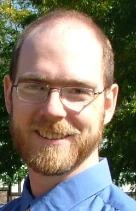 Charles Montgomery has travelled around the world to better understand what it means to have a Happy City, how we can build it by focusing on what makes us truly happy, and how it changes everything when we do. This concept is a key part of the shift towards economies that work for people and the planet, because when we build cities around happiness, we are simultaneously building an economy that works for us as a whole.
Charles Montgomery has travelled around the world to better understand what it means to have a Happy City, how we can build it by focusing on what makes us truly happy, and how it changes everything when we do. This concept is a key part of the shift towards economies that work for people and the planet, because when we build cities around happiness, we are simultaneously building an economy that works for us as a whole.
What are some key elements of New Economies?
|
Check out other posts in this series: • Mike Sandmel |
First up: new economies must value happiness and wellbeing, rather than relying on cold, hard GDP as a guiding objective. I think this is a reasonable transition, because the reliance on GDP as a measure of societal success was an invention itself. More than 200 years ago, when the intellectual elite of the Enlightenment concerned themselves with the pursuit of happiness, economists pronounced happiness unmeasureable, and concluded that since we can’t measure good and bad feelings, policymakers need to rely on what people spend their money on to tell them what makes people happy.
Now, scientists have studied human wellbeing, health, and happiness, and they’ve discovered two things: First, is that peoples’ self-reports on their own happiness correspond to physiological states in the human body as well as public health outcomes; Second, we can correlate these self-reports with all kinds of economic, societal, environmental, and health, contributors. So we now have the tools to move on from this simplistic idea of what it is to succeed as a society.
Another element driving new economies is that we are starting to measure things that really matter. We used to measure GDP, or products moved, or vehicle speeds on our streets; now, policy makers and the rest of us are considering things like life satisfaction, job satisfaction, health outcomes, and the most important ingredient of human happiness, resilience, and productivity, which is social trust.
Social trust is the most powerful ingredient of human happiness, but it is also a key driver of economic productivity, community resilience, and health outcomes.
Cumulatively, the previous two points add up to this one – new economies are social and collaborative, rather than individualistic and proprietary. This acknowledges that the most powerful driver of human happiness is social relationships. It is positive relationships along with social trust together that keep our communities resilient, healthy, and wealthy. These relationships also drive our economy.
How do we work toward fostering these types of genuine social relationships?
The most powerful tool for fostering social trust is the face-to-face encounter. So, while the internet and social media have been helpful in creating and broadening our social networks and in building useful connections, psychologists are finding that online connections are almost never as deep, honest, supportive, and trusting, as those that happen in person.
How does this relate to cities?
This is why the way we design our cities is so important. Cities mediate all of our relationships. We spent the better part of a century building cities that disperse people and destinations far away from each other. Now we know that this dispersal corrodes what geographers call social interaction potential, which is the ability for people to meet face-to-face. Fortunately, we’ve started to embrace complexity and connectivity in our cities. We’re recognizing that the mixed-use, walkable, connected, neighbourhood is not just a healthier place, but also a more social place, and a more creative and economically productive place.
Should we try to measure happiness? If so, how?
This is the great challenge. We have to avoid the trap that the high modernists fell into a century ago. We cannot rely on one measurement of success. It is tempting to want to use one survey question, such as a question about subjective wellbeing, like “how happy are you?” as the measurement of success of any initiative or place.
While we can learn from these surveys, we must not use any one measure to guide us, because human well-being is as complex and layered and multidimensional as our cities themselves. What we have done with Happy City is to draw lessons from all of the social sciences, and from great cities around the world, and then empower people at the local level to use those tools and create places that meet their needs, and are inspired by their own hyperlocal, complex, organic, nuanced, version of the Happy City.
For example, my team and I worked with the citizens of Mexico City to do a Happy Neighbourhood Audit of a contested neighbourhood called Doctores, and the participants stopped us part way through the process, and told us that our model needed a serious tweak to work in Mexico. We asked what they meant, and they pointed out that on our happiness framework we use in Canada, we don’t emphasize safety and security. In Canadian cities, security is no longer people’s first concern. But in Mexico, security is everything. It consumes people’s nights, days, and political passions. It shapes their worldview. Interestingly, while they were driven by a concern for security, they still suggested the same sidewalks, streets, parks, and interventions that we heard from Canadian, American, and European participants. There are some things that are always part of the conversation, but the local context matters. They taught us that no matter how robust a theoretical model may be, the local experience always trumps the global approach.
What does “real wealth” mean to you?
This is a question one has to take personally. I would say that real wealth means I have what I need to stay strong, connected, and challenged, while thriving. The foundation of that, is always going to be my relationships with other people.
 Charles Montgomery is an author, urbanist and creator of transformative conversations about wellbeing in cities. His award-winning book, Happy City, examines the intersection between urban design and the emerging science of happiness. Collaborating with the Guggenheim Museum and other entities, Montgomery has created experiments and design methods that help participants alter their relationships with their cities, and with each other. His writings on urban planning, psychology, culture and history have appeared in magazines and journals on three continents. Among his numerous awards is a Citation of Merit from the Canadian Meteorological and Oceanographic Society for outstanding contribution towards understanding of climate change science. He lives in Vancouver and Mexico City. Learn more at www.thehappycity.com.
Charles Montgomery is an author, urbanist and creator of transformative conversations about wellbeing in cities. His award-winning book, Happy City, examines the intersection between urban design and the emerging science of happiness. Collaborating with the Guggenheim Museum and other entities, Montgomery has created experiments and design methods that help participants alter their relationships with their cities, and with each other. His writings on urban planning, psychology, culture and history have appeared in magazines and journals on three continents. Among his numerous awards is a Citation of Merit from the Canadian Meteorological and Oceanographic Society for outstanding contribution towards understanding of climate change science. He lives in Vancouver and Mexico City. Learn more at www.thehappycity.com.
This blog is part of the ‘Voices of New Economies‘ series within Cities for People – an experiment in advancing the movement toward urban resilience and livability through connecting innovation networks.
The Voices of New Economies series is collectively curated by One Earth and The Canadian CED Network.
This series is an exploration of what it takes to build the economies we need – ones that work for people, places, and the planet. We are connecting key actors, finding patterns, noting interesting differences, and highlighting key concepts and initiatives. Together, this series offers insights into the new economies movement as it develops.



 For Alex Wood, Senior Director, Policy and Markets at
For Alex Wood, Senior Director, Policy and Markets at  Alexander Wood is one of Canada’s leading experts on the green economy. Alex has over twenty years’ experience working at the interface of the environment and the economy, with a particular focus on the development of market-based policies that contribute to a sustainable economy. He has worked in the non-profit (WWF), public (NRTEE), and private (TD Bank Financial Group)
Alexander Wood is one of Canada’s leading experts on the green economy. Alex has over twenty years’ experience working at the interface of the environment and the economy, with a particular focus on the development of market-based policies that contribute to a sustainable economy. He has worked in the non-profit (WWF), public (NRTEE), and private (TD Bank Financial Group)
 Pallavi Roy is a recent graduate from Ryerson University with a Masters in Environmental Applied Science and Management. She is currently working at CultureLink Settlement Services as a Metcalf Sustainability Intern. Her project aims to bring an environmental focus to settlement work, thus making the environmental movement more inclusive for newcomers, and the settlement sector greener. Pallavi is an environmental researcher and community activist with interests in sustainability, energy policy and community engagement. She is passionate about sustainability issues of urban life and is active in the community promoting adoption of sustainable lifestyle choices. Her previous work experience includes various not-for-profit organisations in Toronto, such as Jane’s Walk, Toronto Green Community, Foodshare, and The David Suzuki Foundation.
Pallavi Roy is a recent graduate from Ryerson University with a Masters in Environmental Applied Science and Management. She is currently working at CultureLink Settlement Services as a Metcalf Sustainability Intern. Her project aims to bring an environmental focus to settlement work, thus making the environmental movement more inclusive for newcomers, and the settlement sector greener. Pallavi is an environmental researcher and community activist with interests in sustainability, energy policy and community engagement. She is passionate about sustainability issues of urban life and is active in the community promoting adoption of sustainable lifestyle choices. Her previous work experience includes various not-for-profit organisations in Toronto, such as Jane’s Walk, Toronto Green Community, Foodshare, and The David Suzuki Foundation.

 than 100 posts on our blog.
than 100 posts on our blog.













 Co-ops: The bilingual apex organization for the co-operative movement in Canada, Co-ops and Mutuals Canada, was
Co-ops: The bilingual apex organization for the co-operative movement in Canada, Co-ops and Mutuals Canada, was  International: The Social and Solidarity Economy is getting increasing attention at the United Nations thanks in large part to
International: The Social and Solidarity Economy is getting increasing attention at the United Nations thanks in large part to  Enabling Policy: Manitoba and Québec continue to lead on the policy front: Manitoba introduced a
Enabling Policy: Manitoba and Québec continue to lead on the policy front: Manitoba introduced a  Supporting a New Economy: Last June, the New Economy Coalition held their
Supporting a New Economy: Last June, the New Economy Coalition held their 
 Is your non-profit organization:
Is your non-profit organization: LISC study details strategies that make poor neighborhoods more resilient
LISC study details strategies that make poor neighborhoods more resilient